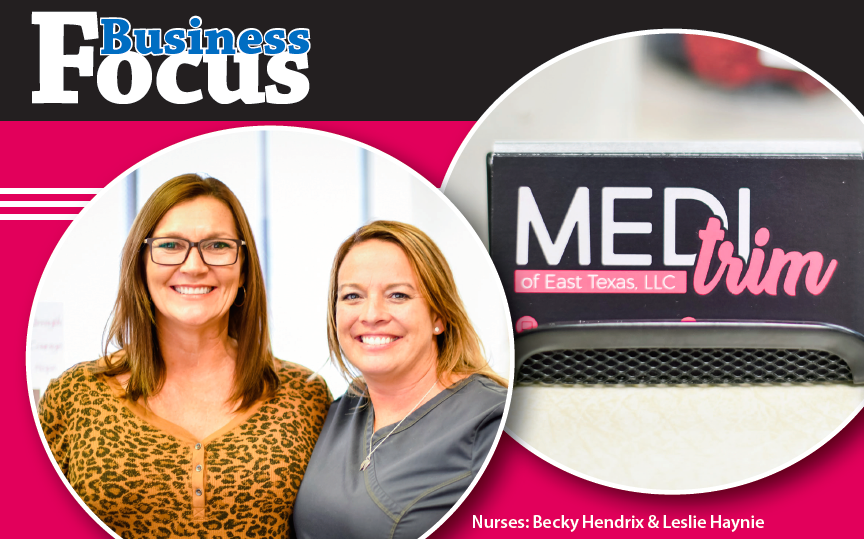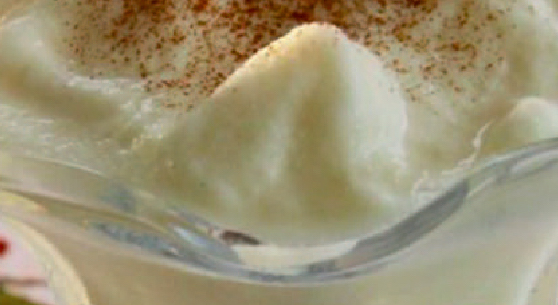Story and Photos By Mike Yawn

Amanda Danning is an artist and a forensic sculptor. In the latter capacity, she has given presentations across the United States; her work is included in several scientific and history books; and she has appeared on the History and National Geographic channels on television. Currently, she is working with the Sam Houston Memorial Museum on the “San Jacinto Project,” forensically recreating the faces of six men who died on the San Jacinto Battlefield.
Were you interested in art while growing up?
Yes and no. I was interested in and liked art. I always drew, always painted, and I always made things. But, in Mabank, Texas, where I grew up, art wasn’t really viewed as a viable option for earning a living. My family never really thought of art as something to take seriously. But when I was in my early 20s, my mother entered some of my pieces in a contest. I won first, second, third, honorable mention, and a scholarship. I began taking art seriously at that time.
Were you in college when you won those contests?
No. I had two children at the time, and I hadn’t gone to college. Winning the art contest and scholarship, however, prompted me to strive for higher education. I obtained a Bachelors and Masters at Florida Atlantic University.
How did you become interested in the forensic side of things?
I had done sculptural work for museums, and like many artists trying to make a living, I had gone into management, ending up working as art director for Southwest Museums Services. After a couple of such jobs, I started my own museum-design company, focusing on portraits and sculptures. One client in Bosque County needed a facial reconstruction. The Smithsonian was consulting on the job, and they recommended it. So I had the opportunity to work with The Smithsonian; in particular, the famous Dr. Owsley, who was the head of Anthropology there. When we finished that project, he recommended me to be part of some upcoming specials for the “History” channel and the “National Geographic” channel.
Dr. Doug Owsley is the head of Cultural Anthropology for the Smithsonian’s National Museum of Natural History. One of the leading figures in the field, federal officials asked him to assist in the identification process of the victims of the 9-11 attack on the Pentagon.
When you were getting started, did you know how important Dr. Owsley was in the field?
No. But when I saw that he was a Director at the Smithsonian, I did some research, and I realized I was lucky—crazy lucky. He is generous with his time. He spent hours working with me, I bought every book I could find on the subject, and I studied up on the anatomy of the face. It was a great opportunity. I learned so much about how faces evolve, how age affects us, and how they heal and degrade.

For readers who may not be familiar with the work of a forensic sculptor, can you provide a job description?
For criminology, the forensic sculptor reconstructs an approximation of what a person looks like, to facilitate identification. I specialize in history, which involves connecting people to the past. The public knows the important people, those who sat for portraits, or those who had books written about them. But there are many people who lived and died and all of them are lost to us except for their bones. So I take all the technical and scientific information that people such as Dr. Owsley, Dr. Bytheway (Director of the Applied Anatomical Research Center at SHSU), and medical examiners have, combine it when necessary with ballistic reports, and translate it into something three dimensional. My job is to take highly technical information and break it down to something to which the average person can relate. I use the bones as a map, and ninety-five percent of what I do is letting the bones tell me what to do. I then interpret the scientific and historical information and incorporate that interpretation into the sculpture.
Can you provide a specific example of your process?
Take Bartholomew Gosnold, an explorer who discovered Martha’s Vineyard, which he named for his daughter. He was 45 when he died, a young man. But he had spent three years on the water going back and forth between England and the “New World.” Being on the sea so much of the time, and without sunscreen or even sunglasses, his skin was almost certainly weathered, and that knowledge of history and his experiences helps us sculpt details that bones cannot define. There are still things that the bones can’t tell us—much of it dealing with the eyelid—but there are a lot of things the bones can tell us. We now know, for example, that the bones around the ear can provide information about whether the ears stuck out and the shape of the earlobe. The science is moving at a great pace.

Forensic sculptors tend to follow one of two methods: the American or the Russian. It’s my understanding that you approach the process from both methods. Can you explain these systems and your approach?
The American method assess the average soft-tissue depth at various locations across the face. This has been refined by MRIs and other technology, and we have now tables categorized by race, gender, age, health, and weight. Using these average depths, we can add flesh to the bones. This is a quick method and, with a skilled forensic sculptor, it is very helpful for criminological purposes.
The Russian Method involves the artist building every single muscle individually, then adding glands, fat tabs, and skin.
I try to combine aspects of these methods. After I began this hybrid approach, I discovered that a well-known forensic sculptor from England, Richard Neaves, pioneered this combinatory method. It is known as the Manchester Method, because that is where he teaches, and it’s the method I have now fully adopted.
You were trained as an artist before you were trained in forensics. How does your art inform your forensic work?
I apply the skills of understanding the clay and armature, and how the human eye interprets sculpture. I tend to be a representational artist, and I gravitate toward the more exacting types of artwork that lend themselves to science and measurements, so the art and the forensics overlap considerably. I work closely with the scientific researchers to learn more about the individuals, and then I interpret. I try to convey what the people were going through. I might, for example, try to capture the desperation of being on a ship for months with a toothache that will turn into a fatal infection. Including the emotional aspect of life into the sculpture while conforming to rigid and strict measurements is, I think, incredibly artistic.
Currently, you are working with researchers on the “San Jacinto Project” for the Sam Houston Memorial Museum.
Yes! John James Audubon, one of the best-known American artists and naturalists, traveled to San Jacinto in 1837, and he picked up at least five skulls from the battlefield, and he gave them to a friend in Pennsylvania, Dr. Samuel Morton, who studied skulls. The University of Pennsylvania gained control of them, but, basically, those five skulls, plus a sixth that came from another source, were sitting in Pennsylvania for about 180 years. They were “re-discovered” around 10 years ago, and this has given us the chance to study them and learn more about the people who fought at San Jacinto.
Tell us about the goals of the San Jacinto Project.
Our broad goal is to learn more about the people who fought at San Jacinto. We know so little now. There are about four researchers who are spending a lot of time trying to learn the background of the Mexican soldiers at San Jacinto, but they aren’t getting much cooperation from the Mexican government. By examining the skulls of the deceased soldiers, however, we can learn a lot about these men. We know, for example, that one of them has a scar that indicates he was cut by a saber across the bridge of his nose and cheekbone. Another was hit by a rifle butt in the face, shattering all the bones in his mid-face area and rendering one eye completely useless. But he healed, and he fought in another battle. And this allows us to add life to the story of San Jacinto, by knowing more about the lives of the men who fought there. Second, we hope to raise funds to gain more interest in DNA testing, which could allow us to learn more about where these men lived, who they descended from, and perhaps even identify some of their current-day relatives.
What role is the Sam Houston Memorial Museum playing in this project?
The Museum is the driving force. It is funding all the hard costs and taking care of the marketing. They will be redoing their entire San Jacinto exhibit in a few years. I will be developing these facial sculptures, and that will form a key part of the new exhibit and allow for much more lifelike and realistic images of the Mexican soldiers who fought there. Manuel Hinojosa is one of the researchers studying this topic, and he will be providing illustrations; I will do the sculptures; and the new information collected by the Museum will provide us with a brand new look at the Battle of San Jacinto.
That’s a large undertaking.
It’s pretty amazing. I was discouraged from going into art, and it took me a while to accept that this is something I can do and be successful. But when I did get into art as a profession, I may have been a little naïve. I dreamt that I would work for Greenpeace, National Geographic, and the Smithsonian. I’m not sure how grounded I was at the time. It took me two years before I even got a show, so working for the Smithsonian was a long way off. But, 30 years later, I have done work for the Smithsonian and National Geographic, and now I am working on skulls that John James Audubon found interesting, picked up, and saved for a friend! I feel a little like Cinderella!
We haven’t discussed your non-forensic art much, but when I was exploring your website (www.writteninbone.com), a landscape is on your homepage. Is that “The Window” at Big Bend?
It is. It is a fantastic view. I loved being there, I love that painting, and I loved doing it. I think one of the things that makes this painting different from most artists’ paintings of this same view is that I’ve added gold leaf to the sun coming up and hitting the mountains on the west side of that gully. When you’re in a room with changing light, you get a lot more drama in that depiction than you could with just paint.

You indicated people were generally skeptical about careers in art, and initially discouraged your career aspirations. How do you feel about that now?
I sympathize with those artists who, like myself, grew up with everyone saying, “You can’t make a living with that. There’s no future for you.” That’s not true. There is a future in anything you can legitimately and legally do. I do more representational art, and for the past 60 years, colleges have discouraged this approach. But if you are good, if you love what you do and are passionate about it, you can make a living at it.
Amanda Danning will discuss the San Jacinto Project and her work as a forensic artist the week of April 22, 2019, at the Sam Houston Memorial Museum. For specific times, visit the Museum’s website: samhoustonmemorialmuseum.com.
More information at www.writteninbone.com



